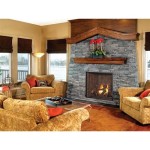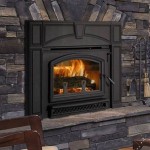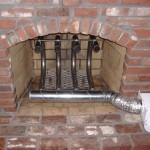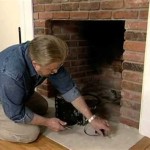Cost Of A Fireplace Insert: A Comprehensive Overview
Fireplace inserts are heating appliances designed to be installed directly into an existing fireplace. They offer a more efficient and controlled heating alternative to traditional open hearth fireplaces, which are notoriously inefficient, losing much of the heat up the chimney. Understanding the costs associated with a fireplace insert is crucial for homeowners considering this type of upgrade.
Several factors influence the overall cost, including the type of insert (wood, gas, or electric), the insert's heating capacity (measured in BTUs), the efficiency rating, the complexity of the installation, and any necessary modifications to the existing fireplace structure. Geographic location also plays a role, as labor costs and material availability can vary significantly across regions.
Key Factors Influencing the Cost of a Fireplace Insert
Several core elements contribute to the final expenditure. These include the cost of the insert itself, the installation fees, and any ancillary materials or permits required. It is essential to consider each element carefully when budgeting for a fireplace insert.
The type of fuel the insert uses dramatically affects its price. Wood-burning inserts are often the least expensive upfront, but they require ongoing fuel costs (wood) and more maintenance. Gas inserts tend to be more expensive initially but offer convenience and cleaner burning. Electric inserts are generally the easiest to install and operate, but they may not provide the same heating capacity as wood or gas models, and electricity costs must be considered.
Installation costs are highly variable. The complexity of the installation will depend on whether the existing fireplace is properly sized and ventilated. Modifications, such as chimney lining or gas line installation, significantly increase expenses. Obtaining necessary permits and inspections can also add to the overall cost.
Beyond the basic insert and installation, other costs may arise. These include the purchase of accessories like blowers (to circulate heat), decorative fronts or surrounds, and remote controls. Maintenance, such as chimney cleaning and annual inspections, should also be factored into the long-term budget.
Breaking Down the Cost Components
To gain a clearer understanding of the financial commitment, it is helpful to examine the individual components that contribute to the total cost of a fireplace insert project.
Cost of the Fireplace Insert: This is the primary expense. Wood-burning inserts typically range from $1,500 to $4,000, depending on size, features, and brand. Gas inserts generally cost between $2,500 and $6,000, with models offering advanced features and higher heating capacity at the higher end. Electric inserts are usually the most affordable, ranging from $300 to $1,500, though their heating output may be limited.
The quoted price of the insert often does not include the cost of the surround or faceplate. Many inserts require a decorative surround to cover the gap between the insert and the existing fireplace opening. Surrounds can range from a few hundred dollars to over a thousand dollars, depending on the material and design.
Installation Costs: Professional installation is strongly recommended for most fireplace inserts, especially gas and wood-burning models. Installation fees can vary greatly, typically ranging from $500 to $3,000 or more. Factors influencing installation costs include the complexity of the job, the need for chimney lining or repairs, gas line installation, and local labor rates.
Chimney lining is a crucial safety consideration for wood and gas inserts. If the existing chimney is not properly lined or is in poor condition, a new liner must be installed. Chimney lining can add significantly to the cost, ranging from $1,000 to $4,000 or more, depending on the height of the chimney and the type of liner used.
Gas line installation is another potential expense for gas inserts. If there is no existing gas line near the fireplace, a qualified technician must run a new line. This can involve trenching, pipefitting, and connecting to the main gas supply, adding hundreds or even thousands of dollars to the installation cost.
Permits and Inspections: Most jurisdictions require permits for fireplace insert installations, particularly for gas and wood-burning models. Permit fees vary by location but typically range from $50 to $200. Inspections are also usually required to ensure that the installation meets safety codes. The cost of inspections is often included in the installation fee, but it is important to confirm this with the installer.
Additional Costs: Beyond the core expenses, other costs may arise during the installation process. These could include the cost of disposal of the old fireplace components, repairs to the fireplace opening, electrical work for electric inserts or blower fans, and the purchase of accessories like remote controls, hearth pads, or chimney caps.
Strategies for Managing and Reducing Costs
While fireplace inserts represent a significant investment, there are several strategies homeowners can employ to manage and potentially reduce the overall cost without compromising safety or performance.
Obtain Multiple Quotes: Comparing quotes from multiple qualified installers is essential. Prices can vary considerably, even for the same model and installation requirements. Request detailed breakdowns of the costs, including the cost of the insert, installation fees, chimney lining (if needed), permits, and any other associated expenses. This allows for a better understanding of the market rate and identifies potential areas for negotiation.
Consider the Season: Fireplace installers often experience peak demand during the fall and winter months as homeowners prepare for the heating season. Installing a fireplace insert during the off-season (spring or summer) may result in lower installation costs due to reduced demand and increased availability of installers.
Take Advantage of Rebates and Incentives: Federal, state, and local governments, as well as utility companies, often offer rebates and incentives for energy-efficient heating appliances, including fireplace inserts. Research available programs in the area and determine eligibility for any applicable rebates. These incentives can significantly reduce the upfront cost of the insert.
Perform Preparatory Work (If Capable and Safe): Depending on the homeowner's skill set and the specific requirements of the installation, certain preparatory tasks can be performed to potentially reduce labor costs. This could include removing the existing fireplace surround, cleaning the firebox, or ensuring clear access to the chimney. However, it is crucial to avoid performing any tasks that could compromise safety or void warranties.
Choose the Right Size and Type: Selecting the appropriate size and type of fireplace insert for the space is crucial. An oversized insert will consume more fuel and may overheat the room, while an undersized insert will not provide adequate heating. Consult with a qualified professional to determine the optimal BTU rating and fuel type for the home's heating needs. Choosing a less expensive insert that sufficiently meets the heating requirements can save money without sacrificing performance.
Proper Maintenance: Investing in regular maintenance, such as annual chimney cleaning and inspections, can prevent costly repairs and extend the lifespan of the fireplace insert. A well-maintained insert will operate more efficiently, reducing fuel consumption and saving money over time.
Negotiate Pricing: Do not hesitate to negotiate the price of the insert and installation services. Installers may be willing to offer discounts or package deals, especially if competing with other providers. Be prepared to present competing quotes and clearly articulate the budget constraints.
In conclusion, the cost of a fireplace insert is a complex calculation involving several variables. By understanding these factors and exploring cost-saving strategies, homeowners can make informed decisions and invest in a heating solution that meets their needs and budget.

Estimated Page Fireplaces Stoves Inserts Wood Gas Pellet

Gas Fireplace Insert Cost Forbes Home

Estimated Page Fireplaces Stoves Inserts Wood Gas Pellet

Gas Fireplace Inserts Pros And Cons Of Ventless Fireplaces

Estimated Page Fireplaces Stoves Inserts Wood Gas Pellet

How Much Does A Gas Fireplace Cost Fireplaces Direct Learning Center
.aspx?strip=all)
Cost Of Operating A Wood Insert Cord Calculator Regency

2024 Gas Fireplace Insert Costs

How Much Does A Fireplace Insert Cost 2024 Data Angi

Fireplace Insert Removal Costs Considerations 2024 Data Angi
Related Posts








